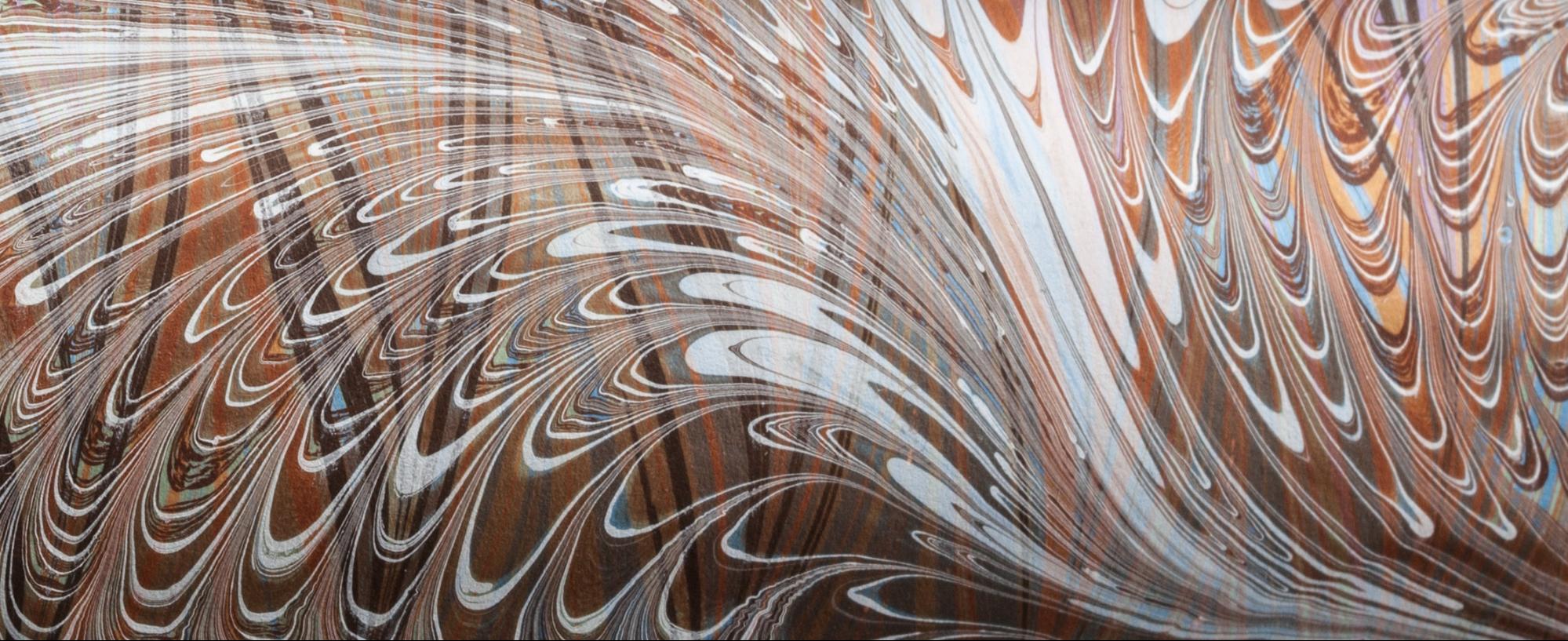Marbling is mesmerizing as a process. The drops of paint spread out on the surface of the size* at varying speeds, not mixing with the other drops but subtly changing their colors as the drops push up against one another. Then the marbler begins to use a stylus or combs to move the paint into new shapes and patterns. The colors still don’t mix; that is a special property of applying paint in this manner. Each time a comb is used or the stylus makes another stroke, the patterns change. That’s the magic. The results are intricate designs where colors are juxtaposed in a variety of ways. Finally, paper which has been treated with alum is laid on the surface of the size and when it is lifted, the pattern has been transferred to the paper and you are ready to begin the process again.
Marbled paper was extremely popular in the 18th and 19th centuries in western Europe. At first, there were no combs and the papers were primarily drops and what looked like veins – the similarity to how the stone marble looks is probably how the craft got its name. Then combs were added and patterns were devised. In a sense, the marbling we do today in the U.S. is a traditional craft rooted in the western tradition because the decorative patterns were mostly developed in Europe.
*”Size” is a thick carrageenan mixture that is in a vat on which the paint drops are floated.



